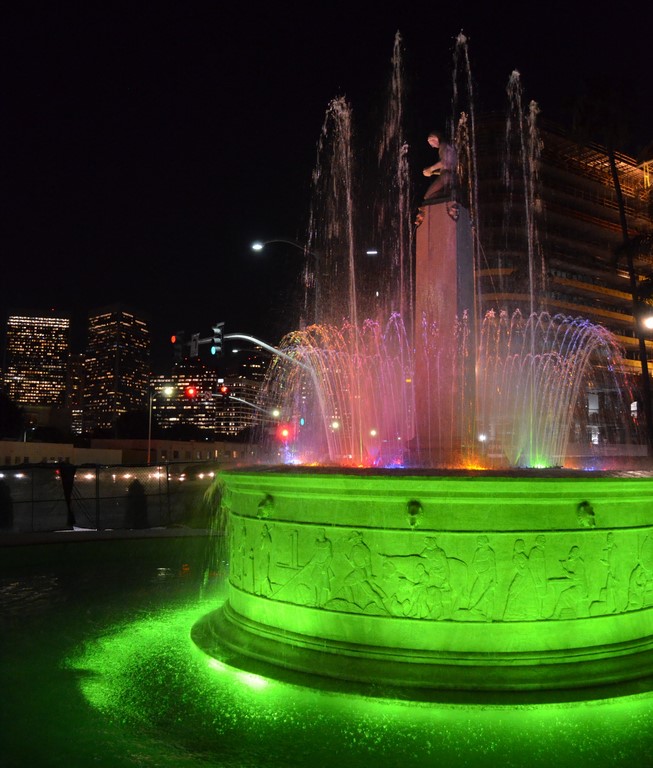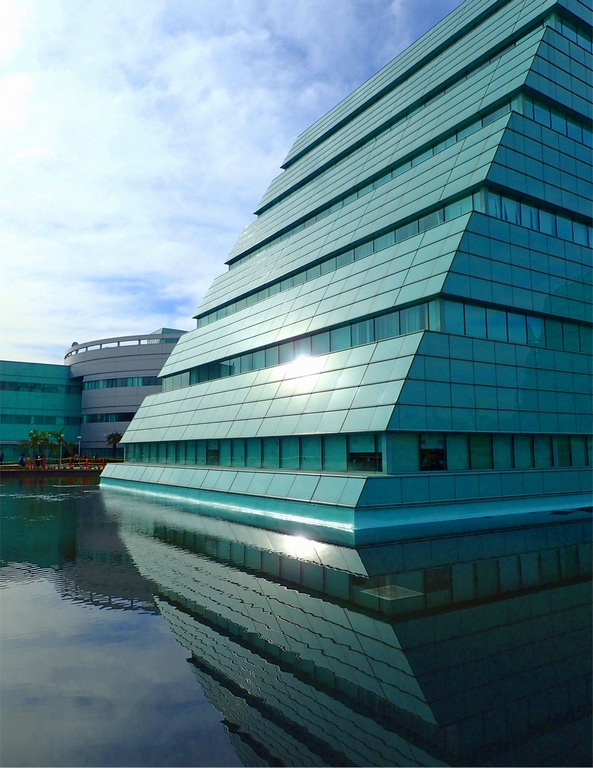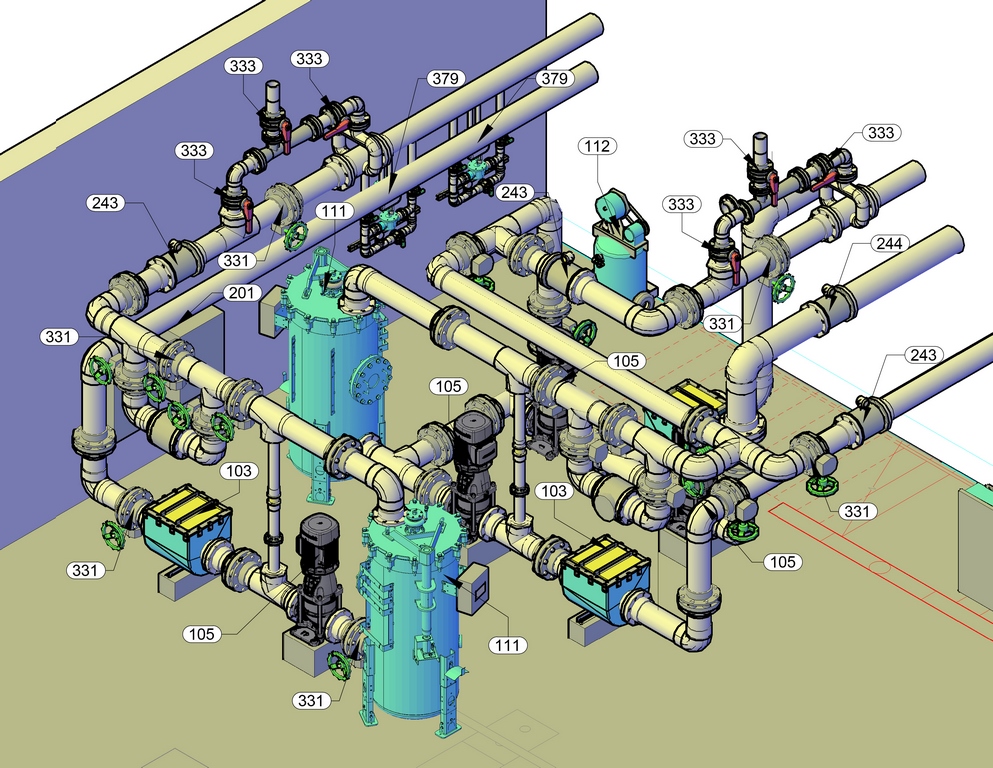Becoming a Modern Watershaper


Despite decades of being derided as an industry that has been unable to change for the better, Mark Holden argues that some segments of the pool industry have, in fact, dramatically improved in recent years. Moving to higher professional ground, he says, requires elevating practices across a range of important fronts.
By Mark Holden
Wow! How things have changed. I never thought that the pool industry would grow or mature in my lifetime. Yet, amazingly, I am seeing growing numbers of watershapers taking on projects with a higher level of professionalism than they once did.
Some would argue the contrary, of course, and none of this is to say there is not vast room for professional growth, but I believe the industry has experienced widespread improvements, and I find it most encouraging to witness this advancement.
Decades ago, widespread belief held that it would be quite a long time, if ever, before the pool industry would adapt to the advanced perspectives of architects, and the higher demands of end-users. That belief was rightly based on years of sub-professional practice by much of the old-school pool industry.
The extent to which this was true or not is certainly debatable, but there is no question that things have changed for the better. I can’t declare that all facets of the industry have improved but the level of ‘high-end’ builders has been stair-stepping upward.
There are multiple reasons for the improvement but certainly much credit goes to the wider berth of education that has emerged in recent years, which helps keep everyone in this growth pattern. And shifting consumer demands for more sophisticated settings is also part of the equation.
(I would further argue that the development of new products still has some progress to make but it is growing too, just at a slower rate than the builders.)
With this, there is a long-term advancement of designers and builders that needs to occur to make this positive forward motion more than an anomaly. The goal, I believe, should be to make improvement an industry standard. Big words, right? The next question is, why not? Why shouldn’t the watershaping industry be held in high regard?
THE VOLUME MYTH
One false myth that still saturates the market is that the more projects you have, the better you are. I was recently on a forensic project and listened to another expert for a defendant’s insurance company ask why Mr. David Tisherman and I did not move to Arizona since there were “more” projects for us there. The myth in his head was that more is better to the point our lack of volume was perceived as a shortcoming. I do not believe this.
If you could have one project that eclipsed the profit and education that you had from all of your other projects combined in the year before, would it be beneficial? I would debate that it is worth it, because I have been in that exact situation. In 1998, I was fortunate enough to take on a single project that consumed my working life for almost three years straight. The experience was unimaginably challenging; but, in fact, it forever changed me professionally.
Nowadays, I can handle 50 projects of this caliber at one time with my team, but I never would have been able to do so if I had not dived into that one project in the manner in which I did. The project, known as Cima del Mundo was featured in the early days of Watershapes Magazine a few times in the early 2000s. When forced to learn, we do. When pressured to be better, we become so. In the process, we learn why more projects is not necessarily the best course for us professionally, and that sometimes less is more.
My decades of writing for WaterShapes have covered architectural history, building codes, product development, mechanical design, architectural development and construction, forensic exploration and my frustration with how the watershaping industry limits itself toward change and growth. In essence, I now see that these articles have been an autobiographical account of my experience watershaping for 35 years, or so.
All of it has been a wonderful ride with extraordinary people. Through it all, I look back at what I was many decades ago and what I am now, and the most striking thing I have learned is what not to do.
DIRECTED LESSONS
Education isn’t always moving in a positive linear fashion. Sometimes what we experience and learn are horrible negatives. The lesson in those situations is to remember why not to do that negative thing or be in that corrosive environment again. In other words, the goal is to learn to forecast what the weather will be like for you in your future and be prepared for it.
These days, my professional experience with other watershapers places them into one of two categories, although this distinction is admittedly overly simplistic. The first group are the builders who understand what a high-end construction process looks like. They are familiar with terms like RFI, RFP, Submittal, As-Built, Pre-Con Meeting, etc., which are used by general contractors to organize a massive site full of dozens, or hundreds, of team members from both the design and contracting trades. The goal is teamwork while making money, and that takes a highly programmatic level of organization.
The second group of watershapers we encounter are the people who work from the front seat of their truck, diving around all day and handling business via only their cell phone, with no clue what it means to be a team player. Emails and web connections are made through the phone as well as all connection to the outside world, other than “walking the job site.”
In considering the latter category, there is a lesson to be learned—the value of teamwork. Easier said than done, it can be tough to fit into a team of individuals that are not like you in any way, but the rewards for doing so can be tremendous.
Our most recent major project was one where we were forced to assimilate with a very large team in a manner that we had not encountered before. It involved our firm advancing its understanding of communications, business systems and technical capabilities. We all needed to become greater on every level and do so immediately to play ball with this new group of collaborators. I saw that the end goal was worth the pain of growing, and so we adapted.
In hindsight, it was worth it. Now our team is easily twice as good as we were in little over a year’s time. We grew for the better. In educating watershapers about these large-scale teamwork environments, we need to look at a few key topics:
Scope
Know your role — which means understanding what is included and excluded within any scope of services that you prepare — and look at your role from your client’s perspective. Should a general contractor or high-end client be responsible for watering a shotcrete shell for hydration curing for twenty-eight days? (It seems silly when you say it out loud, but almost every watershaper excludes this from their scope.)
The acronyms I listed above had one called RFP, which means Request for Proposal. It can be a letter form or a 50-page document spelling out how to understand your scope and how to present your program and costs. Your response will often determine whether or not your proposal will be chosen or not.
The fact is, most large-scale clients and project managers are as concerned about how you handle the RFP as how affordable your fees are. They are looking at whether you can process the request in a timely manner and in a format that fits their program. Also, it means that you need to read all of the plans and specifications each time you bid on a project, opposed to just bidding it the way you do every time. This RFP will likely call for a breakdown of fees and possibly define a payment schedule, as well.
Also, read the insurance requirements. If you don’t have the general liability or umbrella policy limits being requested, you are likely wasting your time bidding on a project. If your limits are too low, call you insurance broker and get a quote for added coverage. Then multiply it by five, which is the number of years that you likely will need coverage for large projects and present the added costs to your client. It works.
Communication
A cell phone is very convenient, but is not the only tool needed to work on very large projects that have a lot of moving parts. Reading emails with large attachments on a little screen, while driving, is not sufficient to handle the complex issues involved here. Solutions are either land-based computers, laptops with ‘hot spot’ connections and/or an employee that manages communications for your company.
Keep in mind, technology is secondary compared to how it’s used to communicate. The response to clients, and their team needs to be accurate and swift, regardless of the device you’re using.
So, getting back to someone after you get home for the day and have had dinner might not allow you to be on these teams. There are also online server-based programs like Pro-Core, Bluebeam and BIM 360 that can manage documentation and communication. General contractors often run all of their communications through these for security and long-term storage. Expand your connections to the rest of the industry.
Always keep in mind, it’s perfectly acceptable to say I don’t know but I can easily find out for you, when asked about something that you have never encountered before.
Documentation
Know how to thoroughly read plans and specifications, or hire someone to handle this for you. Too many times we see that Watershapers will bid projects based upon their own proprietary manner for building. Large projects are an exercise in bidding the project as it was asked for you to do.
As an example, there is an entire project that we just inspected for our client where the contractor plumbed six pools with schedule 40 PVC, while the specs required schedule 80, which the builder failed to read.
This is financially tragic for a builder to correct as you would expect. If there is a desire to change some aspect of a project, the time to do so is after the contract has been authorized via a formal Submittal with proposed changes. Do not make assumptions or changes on your own without authorization. There is very little room for freelance decision-making on most large-scale projects.
Besides the design plans, there is another form of documentation to address is the record-keeping process for work and materials on a project and how you ask formal questions of the team.
A Request for Information, or RFI, is a simple emailed letter that is sent to the project management team when there is an inquiry. The RFI will likely be answered by more than one team member, and without the emailed form there is no way for management/ownership to track all of these little changes.
Not doing so may compromise your place on the team. It sounds tedious but with large teams, there must be a comprehensive documentation record.
Resourcefulness
Have diverse knowledge of products, materials, techniques and other professionals to help you when you need it. This means having a set of go-to people that can help guide you in the right direction when needed. It may even require good communications with your competition with whom you may partner in certain scenarios. Don’t be embarrassed or shy to ask for help or a collaboration to get to your end goal.
This is a key leaning trait that most high-end professionals rely on all the time. If you are perceived as someone that can work with others and have a diverse reservoir of backup, then you are an asset to a team.
Follow-through
The swimming pool industry has had a less than stellar reputation from many decades based on stories of contractors that have walked off jobs, even if sometimes there are good reasons for doing so. We have all heard at least one story of this happening. With large scale protects and teams, skipping out on clients is less of an option and your reputation will take the weight of that action negatively in a big way.
Reputation is key to longevity with this scale of project and clientele. Most opportunities in this realm are either by word of mouth or by proving that you will dedicate yourself and your company to completing your scope of work without compromise. Stick with the scope and clean up your messes. It will pay off.
ONE PERSPECTIVE
I am not necessarily professing that the above list is complete or even accurate. It is based on my experience, my autobiography of professional involvement, which I humbly believe carries some merit.
Everyone has a different experience, and I am sure that many of you reading this disagree with part, or all, of what I said. All I can guarantee is that these words have worked for me in some regard, and I couldn’t hurt to try at least some of it.
Finally, some sense of order has emanated from the rambling ‘old-school’ methods of designing (or not designing) and building watershapes. Design/build is becoming less of a term used and true water architectural design is implemented on a great deal of projects, both large and small.
The days of detailed design directions is upon us and if you want to move in this realm, minding your business in the literal sense is the place to start.
Mark Holden is president and founder of Holdenwater, a design and engineering firm focusing on complex commercial and residential watershaping projects













